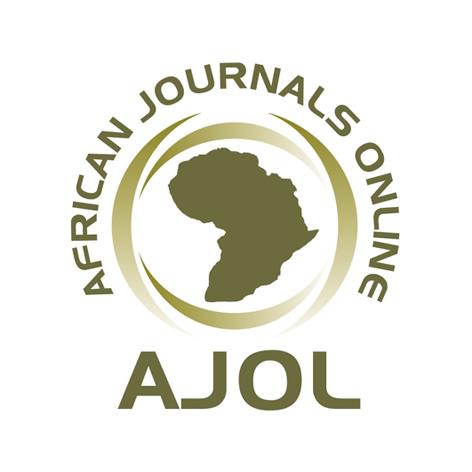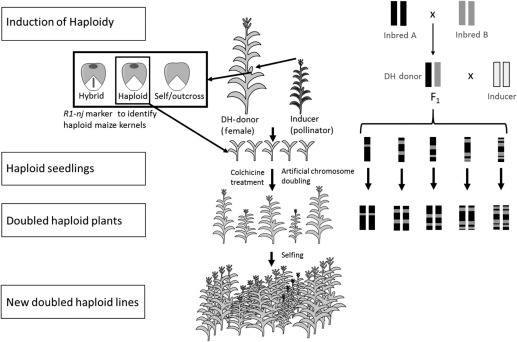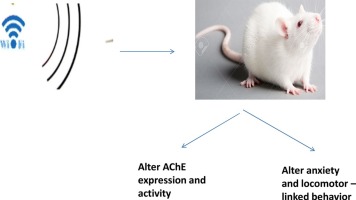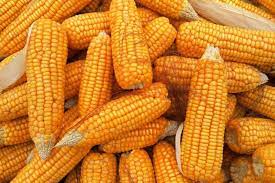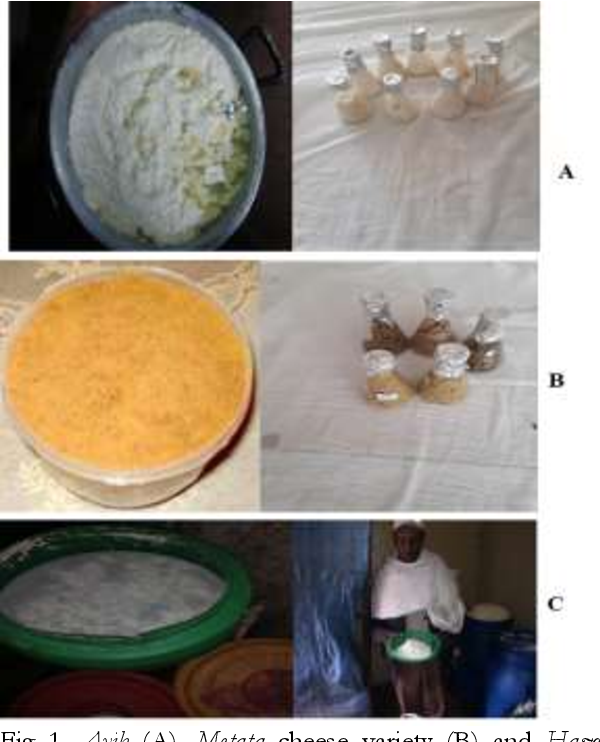Management of Aflatoxigenic Fungi in Groundnut Production in Eastern Ethiopia
June 1, 2013
Downloads
Yitayih, G., A. Ayalew, and N. Dechassa. “Management of Aflatoxigenic Fungi in Groundnut Production in Eastern Ethiopia”. East African Journal of Sciences, vol. 7, no. 2, June 2013, pp. 85-98, doi:10.20372/eajs.v7i2.156.
Abdi, A. 2004. Effect of Plant Density and Variety on Yield and Yield component of Groundnut (Arachis hypogaea L.) at Babile, Eastern Ethiopia. MSc. Thesis, Alemaya University, Alemaya, Ethiopia.
Ahmad, Y., and Ghaffar A. 2007. Soil solarization: a management practice for mycotoxins in corn. Crop Diseases Research Programme, Institute of Plant and Environmental Protection. Pakistan Journal of Botany 39(6): 2215-2223.
Alemayehu, C., Berhanu, A., Mulugeta, T., Abdi, M. Tameru, A., and Skinnes, H. 2014. Opportunities and Constraints of Groundnut Production in Selected Drylands of Ethiopia. DCG Report No. 74. Drylands Coordination Group, Agricultural University of Norway
Amare, A., Dawit, A. and Mengistu, H. 1995. Mycoflora, aflatoxins and resistance of groundnut cultivars from eastern Ethiopia. SINET Ethiopian Journal of Science 18:117-131.
Anonymous. 2000. Ikisan- Disease Management in Groundnut. (http://www.ikisan.com/crop%. 20Specfic/Eng/links) (Accessed on January 4, 2011).
Anonymous. 2008. Soil Solarization-Soil fumigation: Non-chemical Alternatives. (http://www.fao.org/ docrep /T0455E/T0455E00.htm) (Accessed on January 8, 2010).
Bacha, N., Ayub, N., Ahmad, Y., .Abbas, M. and Rafi, A. 2007. Soil solarization: A safe, affective and practicable technique for the control of soil born fungi and nematodes. Pakistan Journal of Biological Sciences 10: 57-64.
Barbercheck, M.E. and Von Broembsen, S.L. 1986. Effects of soil solarization on plant parasitic nematodes and Phytophthora cinnamomi in South Africa. Plant Disease 70: 945-950.
Barrau, C., Porras, M., D. Salas, N. Ramos, E. Neto, C. Smith, J. Carnival Fernandes and Romero, F. 2005. Viable alternatives to the use of pesticides in tomato (Lycopersicon esculentum). Librosummary VIl National Meeting on Integrated Production College of Agriculture. Coimbra, Portugal.
Barrau, C., Porras, M Chambers, D. Ramos, N. Soares, C. and Romero, F. 2006. Effect of bio-fumigation, solarization and biofungicides on Phytophthora infestans. Book of Abstracts XIII Congress of the Spanish Society of Phytopathology. Murcia, Spain.
Barrau, C., Porras, M. Romero, E. Zurera, C Ramos, .N. Soares, C. Neto, E.. Marreiros, A Entrudo, J. and Romero, F. 2009. Brassica Carinata for Control of Phytophthora Spp. in Strawberry Field Crops.
Belay, A. 2002. Factors Influencing Loan Repayment Performance on Rural Women in Eastern Ethiopia: the Case of Dire Dawa Area. MSc. Thesis, Alemaya Univesity, Ethiopia.
Bell, D.K., and Crawford, J.L. 1967. A Botran- amendeil medium for isolating Aspergillusflavus from peanuts and Soil. Phytopathology 57: 938-941.
Bottone, E.J. and Peluso, R.C.W. 2003. Production by Bacillius pumilus (MSH) of an antifungal compound that is active against Mucoraceae and Aspergillus species. Preliminarily Report. Journal of Medical Microbiology 52: 69-74.
Caliskan, S., Arslan, M. and Arioglu, H. 2008. Effects of sowing date and growth duration on growth and yield of groundnut in a Mediterranean-type environment in Turke. Field Crops Research 105: 131-140.
CSA (Central Statistical Agency). 2011. Agricultural Sample Survey for the 2010/2011 Crop Season. Volume I. Report on Area and Production of Crops for Private Peasant Holdings (Meher Season). Statistical Bulletin, Addis Ababa, Ethiopia.
Durowade, K.A., O.M. Kolawole, R.O. Uddin and Enonbun, K. I. 2008. Isolation of Ascomycetous Fungi from a Tertiary Institution Campus Soil. Journal of Applied Science and Environmental Management 12(4): 57- 61.
Elmore, L.C., Stapleton, J.J. Bell, C.E. and Devay, J. E. 1997. Soil Solarization a Nonpesticidal Method for Controlling Diseases, Nematodes, and Weeds. University of California Division of Agriculture and Natural Recourses Publication.
Elwakil, M.A. and El-Metwally, M.A. 2000. Hydroquinone a promising antioxidant for managing seed-borne pathodenic fungi of peanut. PakistanJournal of Biological Science 3: 374-375.
GenStat. 2009. GenStat release 12.1 (PC/windows XP), 12 th edition. 06 January 2011. 10:28:44. Coppy right 2009, VSN international Ltd.
Hartz, T.K., DeVay J.E. and Elmore, C.L. 1993. Solarization is an effective soil disinfestations technique for strawberry production. Horticultural science 28: 104-06.
Hossein, S., Okhovvat M. and Saremi, H. 2007. Control managements of Aspergillus flavus a main aflatoxin producers and soil borne fungi on pistachio in Kerman. Plant Pathology. Iranian Food Science and Technology Research Journal, 3(2): 21-27.
IARC (International Agency for Research on Cancer). 2002. IARC Monographs on the Evaluation of Carcinogenic Risks to Humans. Some Traditional Herbal Medicines, Some Mycotoxins, Naphthalene and Styrene. International Agency for Research on Cancer, Lyon.
ICRISAT (International Crops Research Institute for the Semi-Arid Tropics). 2000. Aspergillus and Aflatoxin in Groundnut. Proceeding of International Workshop, 21 April, 2005, ICRISAT, Patancheru, India.
Inglis, G.D. and Kawchuk, L.M. 2002. Comparative degradation of oomycete, ascomycete, and basidomycete cell walls by mycoparsitic and biocontrol fungi. Canadian Journal of Microbiology 48(1): 60-70.
Katan, J. 1981. Solar heating (solarization) of soil for control of soil-borne pests. Annual Review of Phytopathology 19: 211-236.
Papavizas, G., Trich, C. and Glicladium. 1985. Biology, ecology and potential for biocontrol, Annual Review of Phytopathology 23: 23-54.
Ramirez-Villapudua, R.J. and Munnecke, D.E. 1985. Effects of solarization of soil amended with cabbage residues on Fusarium oxysporum f.sp. congiutinans race-5. Phytopathology 75: 1291.
Rathod, L.R., Jadhav, M.D., Kanse, D.S., Patil D.P,, Gulhane, S.D and Deshmukh, P.S. 2010. Effects of Fungicides on Seed Borne Pathogen of Groundnut. International Journal of Advanced Biotechnology and Research, 1 (1): 17-20.
Reddy, C. S., Reddy, K. R. N., Muralidharan, K. and Mangala, U.N. 2008 . Aflatoxigenic Aspergilli and a flatoxi n contamination of rice and i ts m anagement in India. (www.aspergillus.org.uk/ secure/conferen ces/confabstracts/ posters/ A)
Romero, E., Zurera, C. Barrau, C and Romero, F. 2006. Effect biofumigant Brassica species in the growth of Phytophthora spp. in vitro. Preliminary Results. Book of Abstracts XIII Congress of the Spanish Society of Phytopathology. Murcia, Spain. Saleem, S.. 1994. Studies on Soil-borne Root Infecting Fungi with Special Reference to The Control of Root Rot and Root knot Disease Complex. Departement of Botany, University of Karachi.
SAS (Statistical Analysis System) software. 2009. Version 9.2. Inc. Carry, North California. USA.
Stoloff, L., Castegnaro, M., Scott, P., O'Neill, I.K. and Bartsch, H. 1983. Environmental carcinogens selected methods analysis of some mycotoxins. Scientific Publication. Lyon and Cedex, (eds.), France: International Agency for Research on Cancer 5(44).
Tamado T., Schütz W. and Milberg, P. 2002. Germination ecology of the weed Parthenium hysterophorus in eastern Ethiopia. Annals Applied Biology, 140: 263-270.
Tamietti, G. and Valentino, D. 2001. Soil Solarization: A Useful Tool for Control of Verticillium Wilt and Weeds in Eggplant Crops under Plastic in the Po Valley. Journal of Plant Pathology 83 (3): 173-180.
Teklemarim W., Asfaw T., and Mesfin T. 1986. A review of crop protection research in Ethiopia. In (Amare A.): Studies on the Mycoflora and Aflatoxins of Groundnut seed in Eastern Ethiopia. MSc Thesis, Alemaya University of Agriculture, Alemaya, Ethiopia.
Tjamos, E.C. 1998. Methyl Bromide Alternatives for North African and Southern European Countries. Achievements and Difficulties in the 25 Years of Research on Application of Soil Solarization. Agricultural University of Athens, Department of Plant Pathology, Athens, Greece.
Widodo and Budiarti, T. 2009. Suppression of Fusarium Root Rot and Southern Blight on Peanut by Soil Solarization. Journal of ISSAAS, 15 (1): 118-125.
Wild, C.P. and Hall, A.J. 1998. Hepatitis B virus and liver cancer unanswered questions. Cancer survey. Infections and Human Cancer 33: 35-54.
Wild, C.P. and Turner, P.C. 2002. The toxicology of aflatoxins as basis for public health decisions. Mutagenesis 17: 471-482.
Yu, J., C.A. Whitelaw, W.C. Nierman, D. Bhatnagar and Cleveland, T.E. 2004. Aspergillus flavus expressed sequence tags for identification of genes with putative roles in aflatoxin contamination of crops. FEMS Microbiology Letter 237: 333-340.
Ahmad, Y., and Ghaffar A. 2007. Soil solarization: a management practice for mycotoxins in corn. Crop Diseases Research Programme, Institute of Plant and Environmental Protection. Pakistan Journal of Botany 39(6): 2215-2223.
Alemayehu, C., Berhanu, A., Mulugeta, T., Abdi, M. Tameru, A., and Skinnes, H. 2014. Opportunities and Constraints of Groundnut Production in Selected Drylands of Ethiopia. DCG Report No. 74. Drylands Coordination Group, Agricultural University of Norway
Amare, A., Dawit, A. and Mengistu, H. 1995. Mycoflora, aflatoxins and resistance of groundnut cultivars from eastern Ethiopia. SINET Ethiopian Journal of Science 18:117-131.
Anonymous. 2000. Ikisan- Disease Management in Groundnut. (http://www.ikisan.com/crop%. 20Specfic/Eng/links) (Accessed on January 4, 2011).
Anonymous. 2008. Soil Solarization-Soil fumigation: Non-chemical Alternatives. (http://www.fao.org/ docrep /T0455E/T0455E00.htm) (Accessed on January 8, 2010).
Bacha, N., Ayub, N., Ahmad, Y., .Abbas, M. and Rafi, A. 2007. Soil solarization: A safe, affective and practicable technique for the control of soil born fungi and nematodes. Pakistan Journal of Biological Sciences 10: 57-64.
Barbercheck, M.E. and Von Broembsen, S.L. 1986. Effects of soil solarization on plant parasitic nematodes and Phytophthora cinnamomi in South Africa. Plant Disease 70: 945-950.
Barrau, C., Porras, M., D. Salas, N. Ramos, E. Neto, C. Smith, J. Carnival Fernandes and Romero, F. 2005. Viable alternatives to the use of pesticides in tomato (Lycopersicon esculentum). Librosummary VIl National Meeting on Integrated Production College of Agriculture. Coimbra, Portugal.
Barrau, C., Porras, M Chambers, D. Ramos, N. Soares, C. and Romero, F. 2006. Effect of bio-fumigation, solarization and biofungicides on Phytophthora infestans. Book of Abstracts XIII Congress of the Spanish Society of Phytopathology. Murcia, Spain.
Barrau, C., Porras, M. Romero, E. Zurera, C Ramos, .N. Soares, C. Neto, E.. Marreiros, A Entrudo, J. and Romero, F. 2009. Brassica Carinata for Control of Phytophthora Spp. in Strawberry Field Crops.
Belay, A. 2002. Factors Influencing Loan Repayment Performance on Rural Women in Eastern Ethiopia: the Case of Dire Dawa Area. MSc. Thesis, Alemaya Univesity, Ethiopia.
Bell, D.K., and Crawford, J.L. 1967. A Botran- amendeil medium for isolating Aspergillusflavus from peanuts and Soil. Phytopathology 57: 938-941.
Bottone, E.J. and Peluso, R.C.W. 2003. Production by Bacillius pumilus (MSH) of an antifungal compound that is active against Mucoraceae and Aspergillus species. Preliminarily Report. Journal of Medical Microbiology 52: 69-74.
Caliskan, S., Arslan, M. and Arioglu, H. 2008. Effects of sowing date and growth duration on growth and yield of groundnut in a Mediterranean-type environment in Turke. Field Crops Research 105: 131-140.
CSA (Central Statistical Agency). 2011. Agricultural Sample Survey for the 2010/2011 Crop Season. Volume I. Report on Area and Production of Crops for Private Peasant Holdings (Meher Season). Statistical Bulletin, Addis Ababa, Ethiopia.
Durowade, K.A., O.M. Kolawole, R.O. Uddin and Enonbun, K. I. 2008. Isolation of Ascomycetous Fungi from a Tertiary Institution Campus Soil. Journal of Applied Science and Environmental Management 12(4): 57- 61.
Elmore, L.C., Stapleton, J.J. Bell, C.E. and Devay, J. E. 1997. Soil Solarization a Nonpesticidal Method for Controlling Diseases, Nematodes, and Weeds. University of California Division of Agriculture and Natural Recourses Publication.
Elwakil, M.A. and El-Metwally, M.A. 2000. Hydroquinone a promising antioxidant for managing seed-borne pathodenic fungi of peanut. PakistanJournal of Biological Science 3: 374-375.
GenStat. 2009. GenStat release 12.1 (PC/windows XP), 12 th edition. 06 January 2011. 10:28:44. Coppy right 2009, VSN international Ltd.
Hartz, T.K., DeVay J.E. and Elmore, C.L. 1993. Solarization is an effective soil disinfestations technique for strawberry production. Horticultural science 28: 104-06.
Hossein, S., Okhovvat M. and Saremi, H. 2007. Control managements of Aspergillus flavus a main aflatoxin producers and soil borne fungi on pistachio in Kerman. Plant Pathology. Iranian Food Science and Technology Research Journal, 3(2): 21-27.
IARC (International Agency for Research on Cancer). 2002. IARC Monographs on the Evaluation of Carcinogenic Risks to Humans. Some Traditional Herbal Medicines, Some Mycotoxins, Naphthalene and Styrene. International Agency for Research on Cancer, Lyon.
ICRISAT (International Crops Research Institute for the Semi-Arid Tropics). 2000. Aspergillus and Aflatoxin in Groundnut. Proceeding of International Workshop, 21 April, 2005, ICRISAT, Patancheru, India.
Inglis, G.D. and Kawchuk, L.M. 2002. Comparative degradation of oomycete, ascomycete, and basidomycete cell walls by mycoparsitic and biocontrol fungi. Canadian Journal of Microbiology 48(1): 60-70.
Katan, J. 1981. Solar heating (solarization) of soil for control of soil-borne pests. Annual Review of Phytopathology 19: 211-236.
Papavizas, G., Trich, C. and Glicladium. 1985. Biology, ecology and potential for biocontrol, Annual Review of Phytopathology 23: 23-54.
Ramirez-Villapudua, R.J. and Munnecke, D.E. 1985. Effects of solarization of soil amended with cabbage residues on Fusarium oxysporum f.sp. congiutinans race-5. Phytopathology 75: 1291.
Rathod, L.R., Jadhav, M.D., Kanse, D.S., Patil D.P,, Gulhane, S.D and Deshmukh, P.S. 2010. Effects of Fungicides on Seed Borne Pathogen of Groundnut. International Journal of Advanced Biotechnology and Research, 1 (1): 17-20.
Reddy, C. S., Reddy, K. R. N., Muralidharan, K. and Mangala, U.N. 2008 . Aflatoxigenic Aspergilli and a flatoxi n contamination of rice and i ts m anagement in India. (www.aspergillus.org.uk/ secure/conferen ces/confabstracts/ posters/ A)
Romero, E., Zurera, C. Barrau, C and Romero, F. 2006. Effect biofumigant Brassica species in the growth of Phytophthora spp. in vitro. Preliminary Results. Book of Abstracts XIII Congress of the Spanish Society of Phytopathology. Murcia, Spain. Saleem, S.. 1994. Studies on Soil-borne Root Infecting Fungi with Special Reference to The Control of Root Rot and Root knot Disease Complex. Departement of Botany, University of Karachi.
SAS (Statistical Analysis System) software. 2009. Version 9.2. Inc. Carry, North California. USA.
Stoloff, L., Castegnaro, M., Scott, P., O'Neill, I.K. and Bartsch, H. 1983. Environmental carcinogens selected methods analysis of some mycotoxins. Scientific Publication. Lyon and Cedex, (eds.), France: International Agency for Research on Cancer 5(44).
Tamado T., Schütz W. and Milberg, P. 2002. Germination ecology of the weed Parthenium hysterophorus in eastern Ethiopia. Annals Applied Biology, 140: 263-270.
Tamietti, G. and Valentino, D. 2001. Soil Solarization: A Useful Tool for Control of Verticillium Wilt and Weeds in Eggplant Crops under Plastic in the Po Valley. Journal of Plant Pathology 83 (3): 173-180.
Teklemarim W., Asfaw T., and Mesfin T. 1986. A review of crop protection research in Ethiopia. In (Amare A.): Studies on the Mycoflora and Aflatoxins of Groundnut seed in Eastern Ethiopia. MSc Thesis, Alemaya University of Agriculture, Alemaya, Ethiopia.
Tjamos, E.C. 1998. Methyl Bromide Alternatives for North African and Southern European Countries. Achievements and Difficulties in the 25 Years of Research on Application of Soil Solarization. Agricultural University of Athens, Department of Plant Pathology, Athens, Greece.
Widodo and Budiarti, T. 2009. Suppression of Fusarium Root Rot and Southern Blight on Peanut by Soil Solarization. Journal of ISSAAS, 15 (1): 118-125.
Wild, C.P. and Hall, A.J. 1998. Hepatitis B virus and liver cancer unanswered questions. Cancer survey. Infections and Human Cancer 33: 35-54.
Wild, C.P. and Turner, P.C. 2002. The toxicology of aflatoxins as basis for public health decisions. Mutagenesis 17: 471-482.
Yu, J., C.A. Whitelaw, W.C. Nierman, D. Bhatnagar and Cleveland, T.E. 2004. Aspergillus flavus expressed sequence tags for identification of genes with putative roles in aflatoxin contamination of crops. FEMS Microbiology Letter 237: 333-340.
Copyright (c) 2015 Getnet Yitayih, Amare Ayalew, Nigussie Dechassa

This work is licensed under a Creative Commons Attribution-NonCommercial-NoDerivatives 4.0 International License.
- I am authorized by my co-authors to enter into these arrangements.
- I warrant, on behalf of myself and my co-authors, that:
- the article is original, has not been formally published in any other peer-reviewed journal, is not under consideration by any other journal and does not infringe any existing copyright or any other third party rights;
- I am/we are the sole author(s) of the article and have full authority to enter into this agreement and in granting rights to Springer are not in breach of any other obligation;
- the article contains nothing that is unlawful, libellous, or which would, if published, constitute a breach of contract or of confidence or of commitment given to secrecy;
- I/we have taken due care to ensure the integrity of the article. To my/our - and currently accepted scientific - knowledge all statements contained in it purporting to be facts are true and any formula or instruction contained in the article will not, if followed accurately, cause any injury, illness or damage to the user.
- I, and all co-authors, agree that the article, if editorially accepted for publication, shall be licensed under the Creative Commons Attribution License 4.0. If the law requires that the article be published in the public domain, I/we will notify Springer at the time of submission, and in such cases the article shall be released under the Creative Commons 1.0 Public Domain Dedication waiver. For the avoidance of doubt it is stated that sections 1 and 2 of this license agreement shall apply and prevail regardless of whether the article is published under Creative Commons Attribution License 4.0 or the Creative Commons 1.0 Public Domain Dedication waiver.
- I, and all co-authors, agree that, if the article is editorially accepted for publication in Haramaya Journals, data included in the article shall be made available under the Creative Commons 1.0 Public Domain Dedication waiver, unless otherwise stated. For the avoidance of doubt it is stated that sections 1, 2, and 3 of this license agreement shall apply and prevail.





